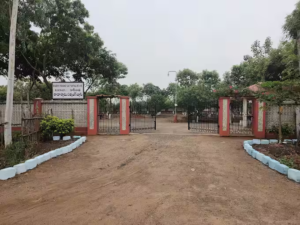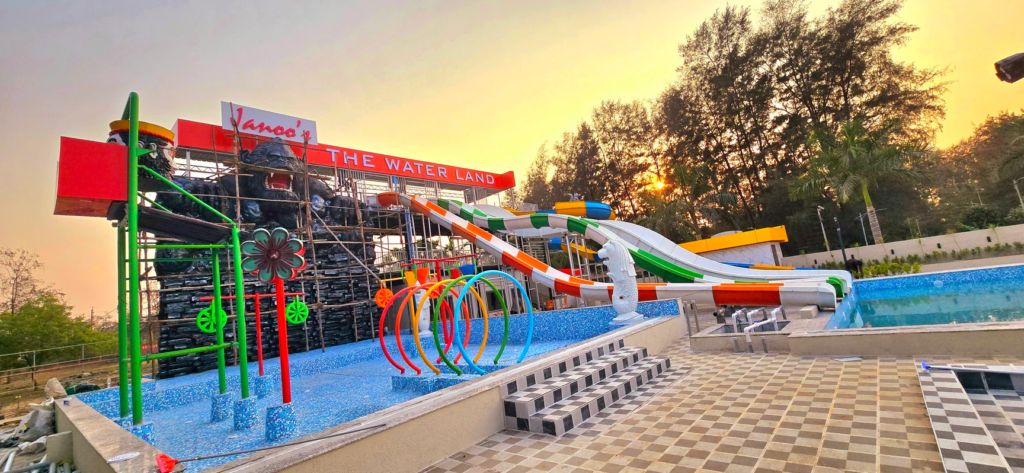Varanasi, also known as Kashi or Banaras, is one of the most ancient and sacred cities in India. Situated on the banks of the Ganges River, it holds immense spiritual significance for Hindus. Varanasi is a city where the divine and the earthly coexist harmoniously, making it a unique destination for pilgrims and tourists alike. The city is renowned for its numerous temples and ghats, each with its own distinct history and spiritual importance. In this comprehensive guide, we will explore the top 10 temples and ghats that every visitor should experience in Varanasi.
Kashi Vishwanath Temple: The Kashi Vishwanath Temple is the most revered temple in Varanasi and one of the twelve Jyotirlingas dedicated to Lord Shiva. It is believed that a visit to this temple and a glimpse of the Jyotirlinga can bestow liberation from the cycle of birth and death. The temple, with its golden spire, attracts millions of devotees annually. The main deity, Vishwanath or Vishweshwara, meaning “Lord of the Universe,” is worshipped with elaborate rituals. The temple complex is surrounded by narrow lanes bustling with shops selling religious paraphernalia, making the entire area vibrant and lively.
Dashashwamedh Ghat: Dashashwamedh Ghat is the most famous and oldest ghat in Varanasi. According to legend, it was here that Lord Brahma performed the “Dashashwamedh Yajna” (ten horse sacrifices). The ghat is renowned for its spectacular Ganga Aarti ceremony held every evening. As the sun sets, priests clad in saffron robes perform a synchronized ritual with lamps, incense, and chants, creating an ethereal and mesmerizing atmosphere. Thousands of devotees and tourists gather to witness this grand event, which symbolizes the worship of the sacred Ganges River.
Manikarnika Ghat: Manikarnika Ghat is one of the holiest and most significant ghats in Varanasi, primarily known as a cremation site. It is believed that those who are cremated here attain moksha, or liberation from the cycle of rebirth. The ghat is named after the mythological tale of Lord Vishnu losing his earring (manikarnika) while creating the universe. The eternal flame at Manikarnika Ghat is said to have been burning for thousands of years, and the sight of funeral pyres is a stark reminder of the transient nature of life. Despite its somber purpose, the ghat exudes a profound spiritual energy that captivates visitors.
Assi Ghat: Assi Ghat is situated at the confluence of the Assi and Ganges rivers. It is a popular spot for pilgrims and tourists due to its serene atmosphere and spiritual significance. Early morning at Assi Ghat is a peaceful experience, with yoga sessions, meditation practices, and boat rides offering a tranquil start to the day. The ghat is also known for hosting cultural events and festivals, providing visitors with a glimpse into the rich artistic heritage of Varanasi. The vibrant energy of Assi Ghat makes it a must-visit destination for those seeking a blend of spirituality and cultural immersion.
Sankat Mochan Hanuman Temple: The Sankat Mochan Hanuman Temple is dedicated to Lord Hanuman and is one of the most revered temples in Varanasi. It is believed that the temple was established by the poet-saint Tulsidas, who had a vision of Lord Hanuman here. Devotees visit this temple to seek Hanuman’s blessings for protection and to overcome obstacles in life. The temple is particularly crowded on Tuesdays and Saturdays, which are considered auspicious days for Hanuman worship. The serene ambiance and devotional fervor make it a spiritually uplifting place to visit.
Durga Temple: The Durga Temple, also known as the Monkey Temple due to the presence of numerous monkeys in its vicinity, is dedicated to Goddess Durga. The temple’s vibrant red color and intricate carvings make it an excellent example of North Indian temple architecture. The temple is a significant pilgrimage site for devotees who come to seek the blessings of the fierce goddess Durga, known for her power and protection. The nearby Durga Kund (pond) adds to the temple’s picturesque setting, making it a popular spot for photography and contemplation.
Tulsi Manas Temple: The Tulsi Manas Temple is dedicated to the poet-saint Tulsidas, who composed the epic Ramcharitmanas here. The temple is made of white marble and is adorned with verses from the Ramcharitmanas inscribed on its walls. Devotees and visitors can often hear recitations of the epic and devotional songs being performed within the temple premises. The temple’s serene environment and spiritual ambiance make it a perfect place for reflection and devotion. It stands as a testament to the literary and spiritual heritage of Varanasi.
Nepali Temple: The Nepali Temple, also known as the Kathwala Temple, is a unique structure built by the King of Nepal. The temple is an excellent example of traditional Nepali architecture, with intricate wood carvings and a pagoda-style design. It is dedicated to Lord Shiva and offers a peaceful and picturesque setting along the banks of the Ganges. The Nepali Temple is a hidden gem in Varanasi, providing visitors with a serene and less crowded alternative to the more famous temples and ghats. Its distinct architectural style and tranquil atmosphere make it a must-visit destination.
Kedar Ghat: Kedar Ghat is another significant ghat in Varanasi, named after the Kedareshwar Temple dedicated to Lord Shiva. The ghat is known for its peaceful ambiance and is a popular spot for pilgrims to take a holy dip in the Ganges. The temple is believed to be a replica of the Kedarnath Temple in Uttarakhand, and devotees visit to seek blessings and purification. The ghat’s serene surroundings and the temple’s spiritual energy make it a perfect place for meditation and contemplation.
Harishchandra Ghat: Harishchandra Ghat is one of the two main cremation ghats in Varanasi, along with Manikarnika Ghat. It is named after King Harishchandra, a legendary king known for his unwavering commitment to truth and righteousness. The ghat is less crowded than Manikarnika but equally significant in its spiritual purpose. The sight of cremation rituals and the burning pyres serves as a powerful reminder of the impermanence of life and the importance of spiritual liberation. Visiting Harishchandra Ghat offers a deep and reflective experience, providing insight into Hindu beliefs about life, death, and the afterlife.
In addition to these top 10 temples and ghats, Varanasi has much more to offer. The city’s spiritual essence is further enriched by its narrow lanes, bustling markets, and vibrant cultural scene. Exploring the galis (narrow alleys) of Varanasi is an adventure in itself, revealing hidden shrines, local eateries, and traditional artisans at work. The city’s ancient heritage and timeless traditions are evident in every corner, making it a living museum of Indian spirituality and culture.
Varanasi is also a hub for classical music and dance, with a rich tradition of performance arts that dates back to ancient times. The city has produced many renowned musicians and dancers who have contributed significantly to Indian classical arts. Attending a classical music concert or a Kathak dance performance in Varanasi is an immersive experience that adds another layer to the city’s spiritual and cultural charm. Venues like the Sankat Mochan Hanuman Temple and the International Music Centre Ashram regularly host cultural events that showcase the talent of local artists and visiting performers.
For those interested in exploring the spiritual practices of Varanasi, there are numerous ashrams and yoga centers that offer meditation sessions, yoga classes, and spiritual retreats. These centers provide a peaceful environment for self-reflection and spiritual growth, allowing visitors to connect with the deeper aspects of their inner selves. Participating in a yoga or meditation retreat in Varanasi can be a transformative experience that complements the city’s spiritual ambiance.
Varanasi’s spiritual essence is also reflected in its festivals, which are celebrated with great fervor and enthusiasm. One of the most significant festivals is Dev Deepawali, also known as the Festival of Lights of the Gods. Celebrated fifteen days after Diwali, Dev Deepawali sees the ghats of Varanasi illuminated with thousands of oil lamps, creating a magical and ethereal atmosphere. The festival is marked by religious rituals, cultural performances, and a grand procession of decorated boats on the Ganges. Another major festival is Mahashivaratri, dedicated to Lord Shiva, which involves night-long vigils, fasting, and elaborate rituals at Shiva temples across the city.
Varanasi’s unique blend of spirituality, history, and culture makes it a destination unlike any other. The city’s ability to harmonize the sacred and the mundane, the ancient and the modern, creates an atmosphere that is both captivating and transformative. Whether you are a pilgrim seeking spiritual solace, a history enthusiast exploring ancient landmarks, or a traveler immersing yourself in the vibrant local culture, Varanasi offers an experience that touches the soul and leaves an indelible mark.
In conclusion, Varanasi is a city that transcends time and space, offering a profound spiritual journey that resonates with the heart and soul. Its temples, ghats, rituals, and cultural heritage create a tapestry of experiences that draw visitors into the depths of its spiritual essence. To truly experience Varanasi is to embrace its chaos and serenity, its traditions and modernity, and its timeless spirituality that continues to inspire and transform all who visit.
SEO Keyword: Varanasi temples Varanasi ghats Kashi Vishwanath Temple Ganga Aarti Manikarnika Ghat Assi Ghat Sankat Mochan Hanuman Temple Durga Temple Tulsi Manas Temple Nepali Temple Kedar Ghat Harishchandra Ghat.









